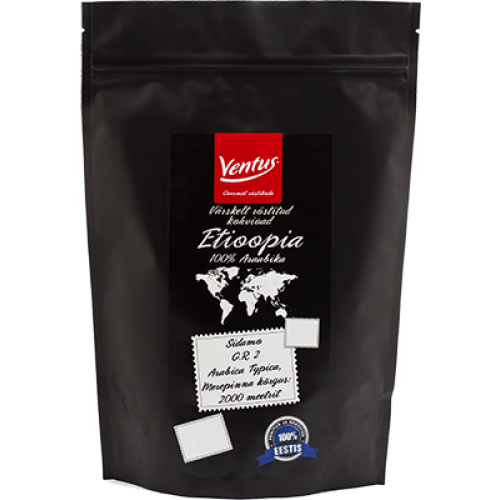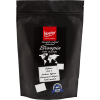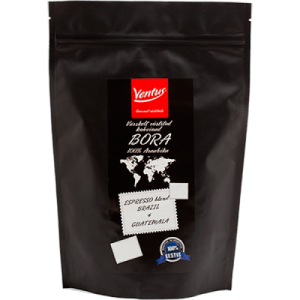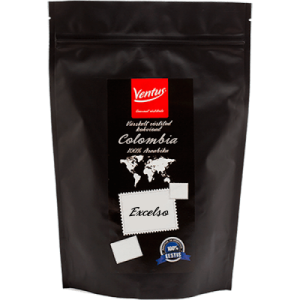ETIOOPIA SIDAMO
8.50€
With the first sip in taste immediately feel a light citrus aftertaste. The bouquet is diluted with sweet fruity shades that made it popular all over the world
Description
Ethiopia is the home of Arabi. It was from here that coffee was spread all over the world. The legend says that one day an Ethiopian shepherd, Caldy, noticed that when his goats tried ripe red berries from unfamiliar bushes, they became cheerful and energetic. Then Caldy tried the berries himself. So mankind became acquainted with coffee.

In Ethiopia, the main regions of coffee growth are Irgacheffe, Sidama, Harrar, Lekampty, Lima and Jimma.
Green Ethiopian coffee from different regions of the country, the names of which it traditionally wears, can take place both wet and dry processing. According to the local Grade 2 system, the grade is washed, Grade 1 is dry. This gradation does not determine the quality or size of the grain. Green coffee, grown in a certain region of Ethiopia, is assembled in a sorting center where individual small batches are mixed, but they are carefully classified. Only selected coffee is allowed for export. Cultivation and processing of coffee is one of the main sectors of the economy of Ethiopia. Approximately 25% of the population directly or indirectly work in the coffee industry. Ethiopia is the largest producer of high quality coffee in Africa; it is 7th in the world in terms of production among countries producing coffee. Approximately half of the harvest is used in Ethiopia itself, a country with a developed and ancient coffee culture.
Ethiopia Sidamo is traditionally subjected to dry processing, and in modern sorting centers it is wet. A significant variation in the size of the grains, as well as their oblong form, are the characteristic differences of the Ethiopian coffee. Brown color is also not a defect in this method of processing, since the husk can not be cleaned evenly from all the seeds, and somewhere it is larger, somewhere smaller – it does not affect the taste in any way. Ethiopian coffee has retained many of the characteristics inherent in the wild-growing original forms of coffee, and has a very rich, strong, balanced and bright taste. The size of the grain varies, and the coffee is not sorted by size – “sieve”.
Additional information
| Method of preparation | Aeropress, Chemex, Drip coffee machine, French press, Geyser coffee por, Pour over, Turkish coffee pot |
|---|---|
| Level of roasting | |
| Type of coffee | |
| Region |









Reviews
There are no reviews yet.